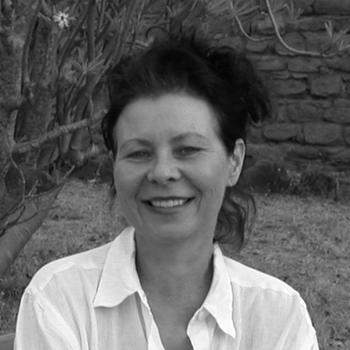Lydia Haustein

Interweaving Performance Cultures
Fellow 2012/13, 2013/14
Lydia Haustein studied
Art History, Ethnology and Classical Archaeology. She is currently Associate Professor at the Academy of Film and Television ‘Konrad Wolf’ in Potsdam-Babelsberg, Visiting Professor at the Central Academy of Fine Arts, Beijing, and Head of the Advisory Board to the jury at the Ludwig Boltzmann Society in Vienna, Austria. Apart from being committed to teaching and lecturing extensively in Europe, Africa and Asia, she has conducted numerous research projects in Asia, Africa, South America and elsewhere. In 2000, she published a comprehensive overview on video art. She was head of the science department at the House of World Cultures in Berlin, where she was appointed acting director in 2005 and also served as director to the interdisciplinary China Festival and to a cultural program featuring South East Asia. For over 10 years she was a member of the International Advisory Board of the Institute of Theatre and Cultural Studies in Vienna, and Head of the Advisory Board for Cultural Studies at the Austrian Academy of Sciences.
Research Project
Performing the Arts: Political Space and Open Secrets
Performance and installation art in China stands out for its extraordinary scope of topics. In light of the numerous, as yet underexplored, individual aspects, I am deliberately limiting the analysis of these art forms to a narrow time frame: from the 1989 Tiananmen calamities until today.
Since 1989, the boundaries between performance and installation art, music video clips, cinema, TV, advertisements, comics, mangas and pop have become increasingly permeable. Like seismographs, artists are recording social and technological developments, their formats penetrating each other. These artists have focused their quest to varying degrees around three major topics: memory/history, nature/culture and the local/the global. Moreover, they have either opted for biographical discourses or adopted performative and ‘experimental’ modes on the fringes of contemporary art and its institutions.
Contemporary culture in China requires a radical reinvention of art criticism, i.e. the necessity of experimenting with new approaches. Yet, I would like to state that this is, of course, not only true of Chinese art. How, then, should we analyze the history of ideas and notions pertaining to this process, as, for instance, Marcel Duchamp’s "ready-mades" or performative art as a whole, without referring to the traditions of art history in the West?
Questions of collapsing distances, the acceleration or deceleration of time or the simultaneity of our perceptions are characteristic of new media and network societies. Nevertheless, these are incapable of divorcing themselves completely from the model of a visual and thereby archaic division of life in time. What is ‘contemporary’ about art today, in light of this fundamental shift? Contemporary art is multifaceted, intrinsically differentiating, with categories shifting, shapes changing, in one word: it is unpredictable—just as the present itself.
Selected Publications
- Das Erbe der Bilder. Kunst und moderne Medien in den Kulturen der Welt (with H. Belting), Munich: C. H. Beck, 1998.
- Videokunst, Munich: C. H. Beck, 2003.
- Global Icons: Globale Bildinszenierung und kulturelle Identität. Göttingen: Wallstein, 2008.
- “Global Icons,” in C. Frohne, M. Schieren and J. Guiton (eds.) Present Continuous Past(s): Media Art. Strategies of Presentation, Mediation and Dissemination, Cologne: 2008.
- “Magie und digitale Bilder – Warburgs Atlas in zeitgenössischer. Perspektive,” in S. Flach (ed.) Der Bilderatlas im Wechsel der Künste und Medien, Munich: 2005.
